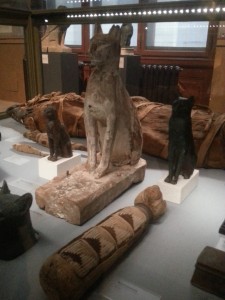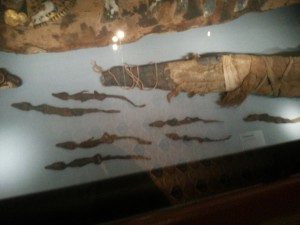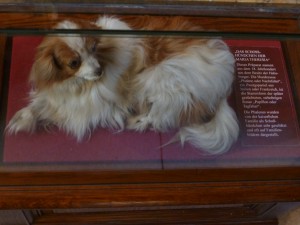In the time of ancient Egypt, mummification was a common tradition for the treatment of human remains after death. Less frequently discussed is the inclusion of animal remains in the practice of this rite. Mummified animals were often meant as offerings to the gods or goddesses, of which they were representative (cats for Bastet, crocodiles for Sebek, baboons for Thoth, just to cite a few examples), and were even bred specifically for such a sacrificial purpose. But animals were also mummified for other intents and motives.
The practice of mummification was used for the remains of the cherished pets of Egyptian individuals, signifying the affection that Egyptians, just like modern Americans, feel towards their animal companions. Although this may be a matter of projection in terms of attributing our values to the lives of the ancient Egyptians, evidence would suggest that the emotion, the feeling of mourning felt with the passing of a human relative, could also be felt in response to the death of a non-human associate, a pet. In these cases, the Egyptians performed the same rituals with respect to the preservation of remains on animals as were used on humans.
I think this topic of animal mummification provides an opportunity to reflect on how our society deals with the death of pets, and in which ways we differ with and are the same as the Egyptians. I would argue just on my own personal, anecdotal account that we lack the same sort of tradition to deal with this aspect of life (and death). Funerals for pets are relatively infrequent and are often not regarded with the same formality and ritual as that of a human. I would assume these differences might stem from our contradictory perspectives on the state of the after-life. For the Egyptians, their pets would join them as companions in the next realm of paradise. But I am not aware of any similar concept held by those who believe in the Heaven of the Christian faith.
I also know of a semi-recent small trend that has developed with the taxidermizing of pets, so that their memory is practically frozen in place. I thought it was amusing when I visited the museums in Vienna, that in Naturhistorisches Museum is Empress Maria Theresa’s stuffed dog. So in a way, taxidermy of pets is almost a more modern form of pet mummification.
I would also be interested in hearing the perspectives of individuals with other cultural backgrounds on how the treatment of animal corpses differs not just between two societies from vastly separated time periods, but also within a more modern, contemporary context.




2 responses to “Animal Mummies: How we cherish pets beyond life”